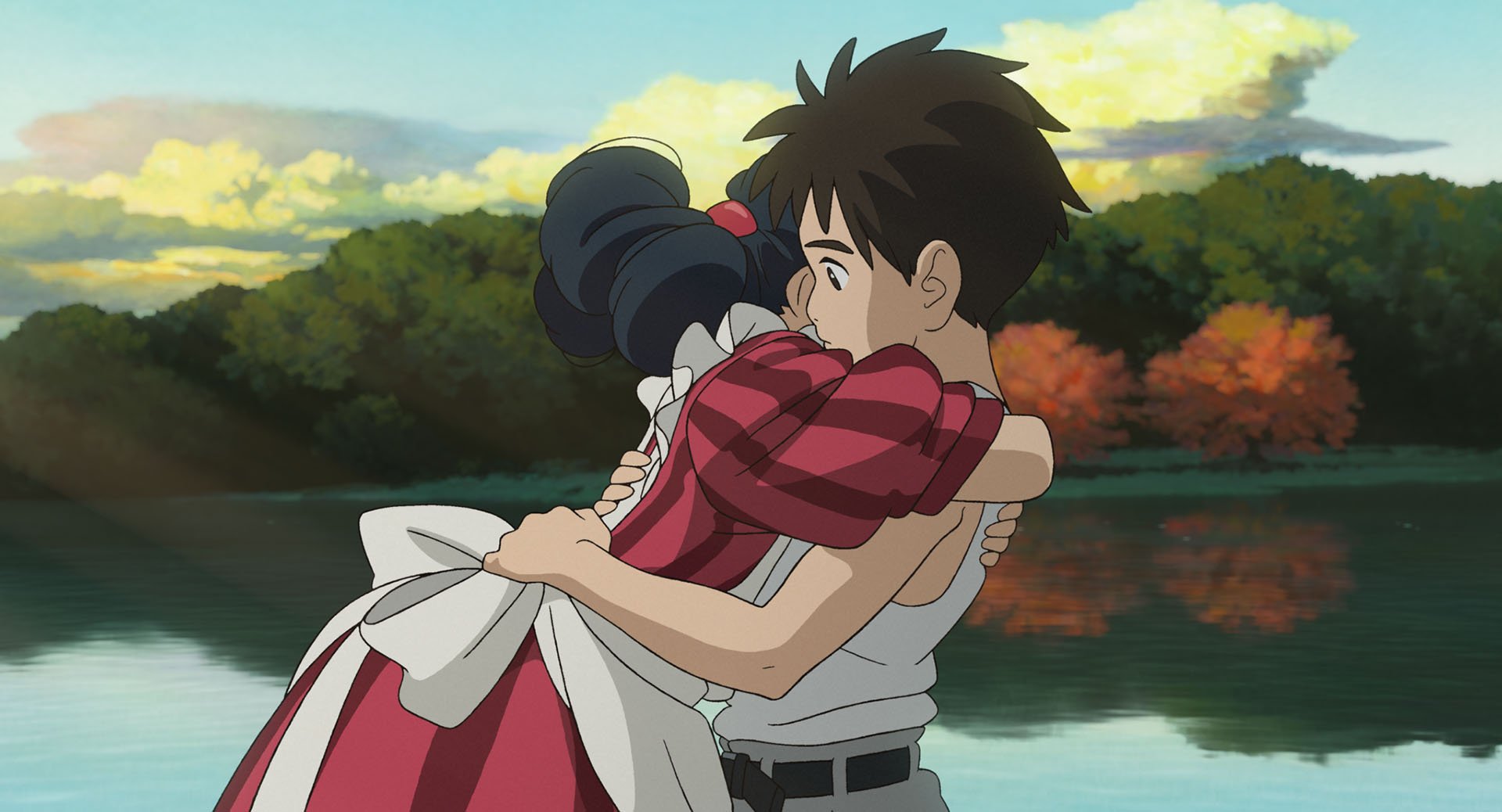The Boy and the Heron
Director: Hayao Miyazaki
Screenwriter: Hayao Miyazaki
Cinematographer: Atsushi Okui
Composer: Joe Hisaishi
Production Company: Studio Ghibli
Distributor: Toho
Release Date: 8 December 2023 (USA)
Runtime: 2 hours 4 minutes
MPA Rating: PG-13
Availability: Theaters
Synopsis
Hayao Miyazaki has us confront the pain of death and grief in a fantastical way in his latest film, The Boy and the Heron (original English translation: How Do You Live?). Set in 1940s Japan, we follow the story of Mahito (Luca Padovan), a young boy who witnesses the death of his mother when her hospital in Tokyo burns down. Three years after her death, him and his father (Christian Bale) begin their new lives with Mahito’s aunt / new step-mom (Gemma Chan) at his mother’s estate. Still grieving over his mom, Mahito is confronted by The Grey Heron (Robert Pattinson), who claims that he can bring Mahito to his mom in a hidden realm where both the living and dead reside. Mahito takes up The Heron on his offer and embarks on a magical adventure that will hopefully get Mahito the closure he needs.
Analysis
The animation left me in wonder while still having me buy into the film’s world. I fell in love with the fluid, graceful way in which scenes moved. That’s not to suggest that the film ignores realism: characters’ movements are organic, and environmental effects like the ruffling of feathers and the flow of water makes the world feel natural. I also enjoyed the mix of animation styles presented, and how scenes were well-lit and richly-colored; these elements enhanced the spectacle and reinforced the idea that creators can do a lot with animation. And coupled with the Miyazaki’s signature creativity, these artistic elements created a beautiful yet accessible fantasy world that I enjoyed getting lost in.
The score will also leave a major impression on you, but one that’s emotional. Composer Joe Hisaishi takes a minimalist approach to scoring; many songs consist of a couple of simple yet elegantly arranged notes played on the piano. The approach makes the movie feel that much more intimate, which is appropriate given the personal nature of Mahito’s journey. This music also evokes feelings of serenity and reflection, strongly reflective of the film’s essence. Hisaishi still knows when to go loud though: times when the score becomes either sweeping, frenetic, or grand in some other fashion will draw you more into the moment.
And though there’s a there there to the story, I unfortunately don’t think I got it. I interpreted the movie’s message to be that a perfect world free of pain and sorrow doesn’t exist, so we must accept the real world for what it is and live with the understanding that we must still cherish the good despite the accompanying bad. But this interpretation may be completely off the mark because there’s so much going on! The world-building never stops and big revelations are simply brushed past rather than given the space necessary to have their impact felt, preventing the movie from taking the time needed to state its message. The film thus feels like a rollercoaster, whose meaning loses clarity amid the rush to the final scene. (But if I’m being honest, the wealth of explainer videos and articles out there makes me believe that this may just be a failure on my end.)
Conclusion
The Boy and the Heron is a beautifully-rendered meditation on life and death. Despite the lack of clarity regarding the movie’s true message, I enjoyed the film for the cinematic and emotional spectacle that it was. So if you’re looking for a movie to more feel than understand, I highly recommend that you catch this one in theaters when you get the chance.
